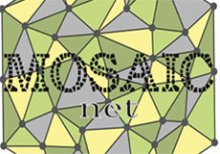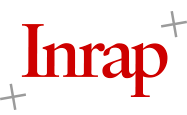
Thematic School CNRS AOROC - Bibracte IV | MOSAICnet
octobrer (8)9 -13, 2018
Ranging from exchange to urban networks, interactions systems are a basic component of every society, from the prehistoric to the modern
Thematic International School “Networks in Archaeological Research Formation AOROC - Bibracte 4”, with the University Franco-German.
octobrer (8)9 -13 2018, Centre de recherche de Bibracte Glux-en-Glenne (France).
See web site MOSAICnet, to provide you with teaching material, scripts and data.
Ranging from exchange to urban networks, interactions systems are a basic component of every society, from the prehistoric to the modern.
The Research School ‘MOSAICnet: Networks in archaeological research’ aims at bringing together young and senior researchers around this transdisciplinary issue of networks. The Research School offers the state of the art of several methodological approaches (such as Social Network Analysis, Spatial Network Analysis, etc.), resulting from the dialogue between the Human and the Exact Sciences.
It also intends to discuss their contributions to the research on past social, cultural and economic interactions.
The Research School will last 6 days, and will address the matters of the theoretical context of the research on interaction systems, the empirical data we can rely on to grasp them, as well as provide an overview of several available methods of system analysis and reconstruction. Those tools will be applied using the Rstudio software.
Languages
Bibracte and the European Research Centre
The theoretical training is given in English. Workshops will have support in three languages: French, German and English.
Applications
Application forms available here
Return to the adress below : et-aoroc-bibracte4@ens.psl.eu
Application Dead-line : 15/05/2018
- Applications are open to senior and young researchers (PhD and Post-docs) as well as all scholars and professionals in archaeology working on communication or exchange networks.
- While interest in the application of network analyses from the participants is expected, expert knowledge about the methodology or the software will not be necessary.
Fees
Courses + accomodation + meals + shuttle from/to train station Le Creusot TGV
300 € : Researchers/Professionals with position
100 € : PhDs and Postdocs without position
Scientific Committee
- Oliver NAKOINZ, Privat-docent, Institut d’Archéologie pré- et protohistorique, Université de Kiel, Allemagne
- Katherine GRUEL, directrice de recherches CNRS, École normale supérieure, France
- Clara FILET, doctorante, Université Paris 1, France
- Franziska FAUPEL, doctorante, Université de Kiel, Allemagne
- Vincent GUICHARD, Directeur de l’EPCC Bibracte
Institutes
CNRS, Formation Permanente
Laboratoire AOROC, CNRS ENS-PSL Paris
Institut d’Archéologie pré- et protohistorique, IMA, Université de Kiel
Université Franco-Allemande Deutsch-Französische Hochschule
Centre de recherche de Bibracte Glux en Glenne (France)
Programme
With the participation of Olivier BUCHSENSCHUTZ, directeur de recherche émérite
CNRS, École normale supérieure, France, Patrice BRUN, Professeur des Universités
Université Paris 1, France, Catalin POPA, Post-doctorant, Université de Leiden, Pays-Bas et Fabrice ROSSI, Professeur des Universités, Université Paris 1, France
- Block 0 : Introduction to R and Rstudio (optional) (O. NAKOINZ, C. FILET and F. FAUPEL) An introductory course on the use of the R language, intended for participants who have no practical experience of this programming language and of the use of scripts.
- Block 1 : Networks in Archaeology: considerations and challenges (O. NAKOINZ, P. BRUN and O. BUCHSENSCHUTZ) Presentations on the theoretical context of the research on interactions and networks in past societies. Several types of networks and the means to identify and reconstruct them, as well as non-computerbased approaches on spatial interactions are considered.
- Block 2 : Social Network Analysis (O. NAKOINZ) Introduction to Social Network Analysis methods. Different centrality indices are introduced to quantify comparisons between several organization structures of networks from several areas and periods.
- Block 3 : Exchange systems in space (F. FAUPEL) Past interactions are constrained by the distance between actors. The course will focus on travel itineraries, by considering the analysis of the road structure, the identification of factors that influence the location of a path, and the method of least cost path analysis.
- Block 4 : Approaching the organization of exchange systems (C. FILET, F. ROSSI) Most of past interactions, their actors and their intensity are not known to archaeologists. The course will be dedicated to ways of approaching the organization of past exchange systems in theabsence of written sources. For this purpose an introduction to spatial interaction models and the study of distribution patterns of archaeological artefacts will be given.
- Block 5 : Benefits and usefulness of network analyses in archaeology (C. POPA and participants) Critical review of the applicability and limits of each method.
Accommodation at Bibracte
- Bibracte site obtained the “Grand site de France” label, for its exceptional archaeological heritage. Situated in the heart of the Morvan Regional Nature Park in today’s central France, the site was the location of one of the first cities of continental Europe, between the 2nd cent. BCE and the 1st cent. CE. The training will take place at the European Research Centre, adjacent to the archaeological site. The Centre possesses a documentation centre on European Protohistory (200 000 volumes), which is open 24 hours a day.
- Accommodation and meals are fully covered at the Bibracte Research Centre (see below).
See also, Université de Kiel
Bibliographie
MILLS B. (2017). Social network analysis in archaeology. Annual Review of Anthropology, (46), 379‑397. https://doi.org/10.1146/annurev-anthro-102116- 041423
COLLAR A., COWARD, F. BRUGHMANS T., & MILLS B. (2015). Networks in archaeology: phenomena, abstraction, representation. Journal of Archaeological Method and Theory, (22), 1‑32.
KNAPPETT C. (2014). Analyse des réseaux sociaux en archéologie. Paris: Maison des sciences de l’homme : Ed. Errance.
BRUGHMANS T. (2010). Connecting the dots: towards archaeological Network analysis. Oxford Journal of Archaeology, 29(3), 277‑303.
Platform Historical Network Research
Journal of Historical Network Research







